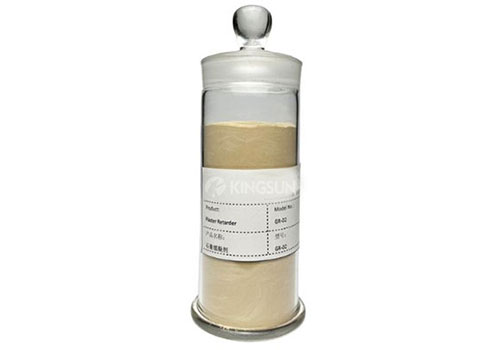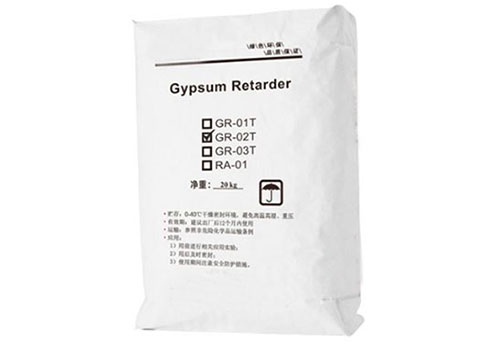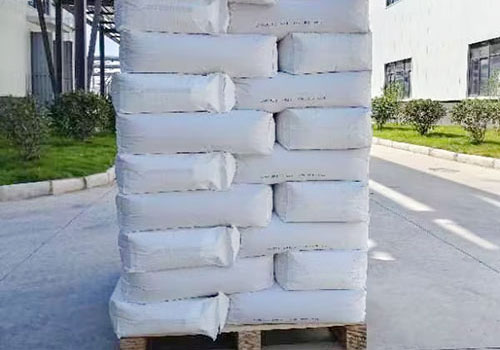Plaster retarder, also known as gypsum retarder, is an additive specifically used to extend the setting time of gypsum. Gypsum is mainly composed of gypsum and water. When water is added to gypsum, a chemical reaction is triggered to form a crystal structure. The process is exothermic, that is, it generates heat. The crystal structure is the basis for gypsum to harden and perform its functions. Although this exothermic reaction is essential for the solidification of gypsum, it can also pose challenges to construction workers in some special applications. In some construction scenarios, especially those involving complex designs and large areas, rapid solidification can lead to uneven construction, making the final effect unsatisfactory. Gypsum retarders can solve these challenges by slowing down the solidification process and extending the working time.
| Detection index | Value |
| Appearance | Yellow powder |
| Bulk density(kg/m3) | |
| PH value(10% in water) | 10-12 |
| Retarding time (0.1%@gypsum) min | 120 |
| Storage | No more than 12 months under condition 5-35°C, dry and cool. Prevent direct sunlight, moisture and be pressed for caking. When it is more than 12 months, it still could be used if there is no caking. |
What is Protein-based Plaster Retarder
Protein-based gypsum retarder is an additive that adsorbs protein molecules on the surface of gypsum to form a colloidal protective layer, thereby reducing the hydration rate and hydration heat of gypsum. This retarder is mainly adsorbed on the surface of gypsum through complexation, covering the surface of dihydrate gypsum crystal nucleus, reducing the surface energy of the crystal nucleus, inhibiting the growth of the crystal nucleus, and reducing the early hydration rate of hemihydrate gypsum.
What Are the Characteristics of Protein-based Gypsum Retarders
Uncertainty in the retarding effect. Protein-based gypsum retarders achieve the retarding effect by hydrolyzing proteins to obtain polypeptide chains. However, because protein is a natural substance, the types and structures of amino acids on its hydrolyzed polypeptide units vary greatly, resulting in unstable retarding effects.
Biological properties. Protein-based retarders have unique biological properties, which make them advantageous in certain applications. For example, protein colloids can inhibit the growth of gypsum crystals through adsorption and protection, while not affecting the morphology of gypsum crystals, and have little effect on the strength of gypsum.
Effect on gypsum strength. When the dosage is the same, the protein-based retarder has a smaller reduction in gypsum strength, which is usually lower than other types of retarders. For example, citric acid has a larger reduction in gypsum strength, while borax has a relatively small effect.
Small dosage and wide range of use. Protein-based retarders are usually used in gypsum building materials such as plaster, bonding gypsum, gypsum putty, and gypsum products. The dosage control needs to be determined according to specific needs and the type and performance of gypsum, and the general dosage is 0.03% to 0.5%.
How to Use Plaster Retarder
The method of using protein-based gypsum retarder is relatively simple. Just add an appropriate amount of retarder to the gypsum and stir it evenly. It should be noted that the amount of retarder should be determined according to the type and purpose of gypsum, and different amounts need to be added in different situations. In addition, changes in temperature will also affect the optimal dosage of retarder. Usually, the dosage of retarder needs to be appropriately increased when the temperature rises.
- Classification
- Main Effects
- Application Fields
- How Does It Work?
Protein-based gypsum retarders are mainly divided into hydrolyzed protein and polymer-modified amino acids.
Hydrolyzed protein retarders are mainly animal proteins such as bone glue, and the protein is degraded into polypeptide chains through alkaline hydrolysis to play a retarding effect.
Polymer-modified amino acid retarders are obtained by chemical synthesis of single amino acids. These protein molecules are adsorbed on the surface of gypsum through complexation to form a colloidal protective layer, covering the surface of dihydrate gypsum crystal nucleus, reducing the surface energy of the crystal nucleus, inhibiting the growth of the crystal nucleus, and having little effect on the strength of gypsum.
The main effects of gypsum retarders include delaying the hydration rate of gypsum, prolonging the setting time, and improving the quality and strength of gypsum products. Specifically, protein-based gypsum retarders react with sodium ions in gypsum to produce a slow solidification effect, thereby extending the fluidity of gypsum and making the product more uniform. In addition, it can effectively reduce the hydration rate of gypsum, so that the gypsum slurry remains plastic for a longer time, thereby achieving flexible regulation of the setting time.
Plaster retarders are widely used in gypsum-based self-leveling, manual or mechanically constructed gypsum mortar, gypsum-based putty, gypsum-based bonding mortar, gypsum-based caulking agents and other fields. This retarder can give gypsum the required setting time at a low dosage while maintaining low strength loss, and is suitable for different types of gypsum materials. It is also used to make various gypsum products such as gypsum boards, gypsum lines, and gypsum sculptures. Due to the effect of the retarder, these gypsum products can be more durable and more beautiful.
The principle of the gypsum retarder is to change the kinetics of the gypsum crystallization process. First, when gypsum and water are mixed, gypsum crystals begin to form. These crystals are part of the gypsum matrix. Second, as more crystals form, they grow and bite into each other, causing the gypsum to gradually solidify. Gypsum retarders then intervene in this process by inhibiting crystal growth. It does this by interfering with the crystals’ ability to grow or by changing the surface properties of the crystals, making it more difficult to bond and solidify. Finally, as crystal growth slows, the setting of the gypsum is also delayed. Using gypsum retarders allows builders to apply plaster more precisely.




